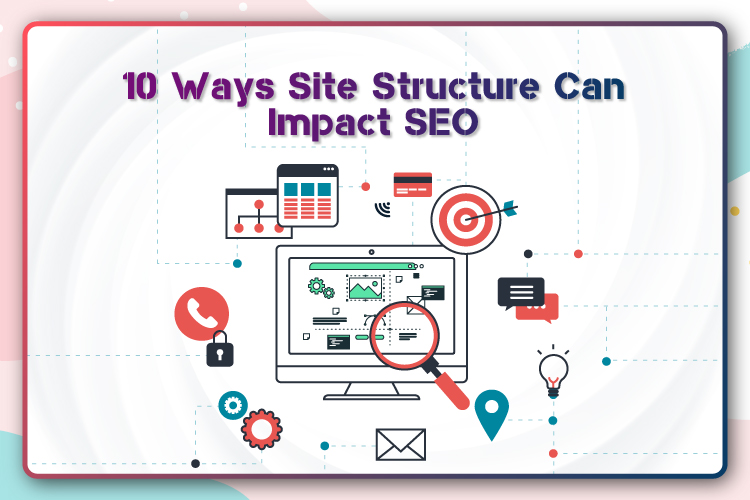

Website optimization for more traffic, profit, and conversions is a crucial part of SEO.
Today, success means to go beyond just having a sleek and tidy website design, which in fact can be an obstruction with regard to the way search engines see and crawl your site.
Standard flat website structure is always a popular choice.
However, a webmaster trends analyst at Google, John Mueller, hinted that having a hierarchical website structure could indicate better to Google – the meaning of each page on your website and how all of them are related and connected.
Given the differences in the principles of website design and structure, the opinions of a web designer and SEO professional can wildly differ.
Your final goal should be to strike a balance between a visually aesthetic site for visitors and a structure built for search engine visibility.
When it comes to SEO, having a well-organized site structure is incredibly necessary.
If you don’t develop something that makes sense, your other SEO, content, and even design efforts will be all pointless.
A great site structure should considerably impact your SEO traffic and conversions, of course, in a positive way, needless to say.
It should also enable your entire organization to better engage with the audience and build a user experience in line with your business goals, products, and services.
In this blog, we will discuss ten ways in which your website structure can impact your SEO.
- Site Crawlability
When it comes to site structure, crawlability is one of the essential factors. It refers to the search engine’s ability to access and crawl through the entire content of your website to ascertain what your site is all about.
This process also involves navigating through subpages and specific topics on your website to grasp it all together.
A web page should direct a visitor elsewhere within the website, from one page to another, in order to qualify as crawlable.
A vital principle of good site crawlability is that the search engine robot should not run into any dead ends while crawling through your site.
Make a united effort to add internal links on all pages building a bridge from one part of your site to another.
Breadcrumb trails, schema markup, and structured data are all beneficial here.
Also, be sure to know and monitor your Google crawl budget regularly.
- URL Structure
URL structure is one of the most crucial factors that relate to how website structure impacts SEO.
Moreover, URLs are the constituents of a successful site hierarchy, delivering value through your domain, and leading visitors to their desired destinations.
The best URL structures are the ones that are easily read by the audience as well as the search engines and incorporate target keywords so that they’re content-rich too.
Effective site structures reflect logic across your entire website. It can be extremely helpful to submit an XML sitemap containing all the crucial URLs you want to rank for to Google and other search engines.
Keep your URLs as simple as possible, and try to avoid overcomplicating them by adding too many parameters.
- HTTP, HTTPS, HTTP/2
HTTPS ensures the security of your website. Since Google continues to make this a part of the user experience, having a secure website can also increase your rankings.
Perhaps that’s the reason more than half of the websites across the world are already utilizing HTTPS.
Besides better rankings, switching to HTTPS comes with numerous other benefits, including:
- Enhanced user experience
- Protection of your visitors’ or customers’ data
- Implementation of AMP (Accelerated Mobile Pages), which is only possible with HTTPS
- PPC campaigns success
- Upgraded Google Analytics data
According to the announcement made earlier this year in November, Googlebot has begun crawling some websites over HTTP/2.
- Internal Linking
The fundamentals of proper website navigation lay down that a visitor should be able to move from one page to another within your site without any snags.
If you have a large website that contains heaps of pages, the real challenge is to make these pages accessible to users within a couple of clicks using navigation only.
Usability specialists suggest that a user should ideally be able to access any given page within three clicks only; however, use this advice as a direction, not a rule.
Internal linking is what helps people and search engines find a page, and similar to message houses, it helps build a flow between pages and content.
Search engine bots find it harder to crawl pages that are not linked.
Classify and arrange links in a manner that won’t sabotage your site structure.
Internal linking works by adding your target keywords within your content and then linking them to another suitable content piece on your website.
There are various benefits of using internal linking purposely for SEO, including:
- The keyword-rich anchors let search engines discover other pages.
- These links can lower your page depth.
- It makes it easier for people to access other content on your website, thus contributing to an improved user experience.
- Search engines give greater importance to internal links concerning SERP rankings.
Often, SEOs will link back to older content using internal links. In some rare cases only, most SEOs would do the opposite – browsing through the older content to link the newer content.
Close the loop by ensuring both the pieces of content are connected via internal links.

- Important Content and Keywords
Content and keyword research are basic elements of SEO and should be a vital part of the way you create and structure your site from the very beginning.
Ensuring its implementation will make sure that your knowledge of your target audience, consumer search behavior, and competitive topics are incorporated into your site structure and layout.
The best websites make sure that they offer an excellent user and search engine friendly experience by ensuring that their site’s most important content is of the highest quality and central to the website structure.
- Duplicate Content
This is no secret that duplicate content hurts your SEO because search engines view it as spam.
Focusing on producing high-quality and original content on the SERPs precisely interprets the way your site should be structured for ideal search engine optimization.
Search Console by Google is a great tool to discover and remove duplicate content on your website.
There might be a possibility to repost duplicate content on Medium or LinkedIn but be careful while doing so.
However, generally, you should refrain from posting duplicate content on your own or anybody else’s website.
- Navigation and User Experience
The standards of usability that the websites nowadays maintain are much more rigid than the initial days of the web.
If a user runs into a poorly built website today, they will completely avoid engaging with it further.
Moreover, it makes sense that people wouldn’t want to waste their time on a website where they have no idea what they should do next.
If a user fails to find what they came looking for on your website, they will simply turn to a competitor website to hunt for it there.
In addition to this, negative user experience harms SEO.
Google understands the way users are interacting with a website for future search results.
Average time on site, click-through rate, and bounce rates all act as indicators to Google’s algorithm.
Statistics that signal a good user experience endorses the search results to Google.
Similarly, statistics that indicate an awful user experience suggest to Google that the page might not be the most relevant or useful for the given search query. Thus Google will modify the future search results appropriately.
Implement these fundamentals of offering a positive user experience:
- Align click-through with user expectations
- Make it easy for visitors to find the desired information
- Make sure your site navigation makes sense to the point of intuitiveness
Conduct some tests with impartial visitors to ascertain the usability of your website and be sure to find out the way real users interact with your site.
- Core Web Vitals and User Experience
Core Web Vitals were introduced with the Google’s page experience update, and when optimizing images, especially, they can affect SEO.
The shift in accent on Cumulative Layout Shift (CLS) and the evaluation of content and content jumping as the images load is something website makers, web designers, and SEO professionals should be working on collectively.
Core Web Vitals might become one of Google’s ranking factors in the coming years, and as of now, not even one-fourth of the total websites meet the benchmark.
Google has already given a heads up to the SEOs and website owners to get ready for this update. So, ‘now’ will be a great time to take action ahead of time.
- Mobile
Taking into consideration the mobile viewers using multiple devices to access your website while structuring your site has become a necessary part of the process.
The total amount of work required can depend on a range of factors such as IT expertise, developer resources, and business models (if your website is related to eCommerce in particular).
According to Google, if you hadn’t considered it earlier while building your website, it will probably cost you a good deal of time and money.
This is particularly true for websites that were built with flash or the ones using old eCommerce platforms.
- Speed and Performance
If your current site structure doesn’t promote a fast user experience, then ultimately, your SEO, as well as your bottom line results, will swoop down.
Slow website and page loading speeds, unresponsive pages, and all that makes the users wait and kill time effectively ruin all the hard work and efforts the web developers, SEO professionals, and content creators had poured into it.
Even a second’s delay in page loading speed can result in loss of page views and traffic, and therefore a considerable decline in conversions, all besides an unhappy potential customer.
Make sure to cooperate with your web designers and IT departments to select the ideal mobile design and site structure – for instance, a responsive, mobile-friendly web design, and pin down all the pros and cons to keep away from high costs and expensive mistakes.
Wrap Up
To conclude, in order to make the most out of your SEO efforts and gain the best results, be sure to structure your website in the most suitable and hierarchical format for your audience as well as your brand.
Ensure it is built for search readability.
Interact with your web designers while building your website; not, after all, is said and done.
Even during the initial stages of conceptualizing your website, it is necessary to plan in advance for future content.
It isn’t really tough to see the way the site structure can impact SEO.
Make sure that your website structure and design are aligned so that your SEO efforts can begin and end on a good note.
Hariom Balhara is an inventive person who has been doing intensive research in particular topics and writing blogs and articles for E Global Soft Solutions. E Global Soft Solutions is a digital marketing, seo, smo, ppc and web development company that comes with massive experiences. We specialize in digital marketing, web designing and development, graphic design, and a lot more.



























